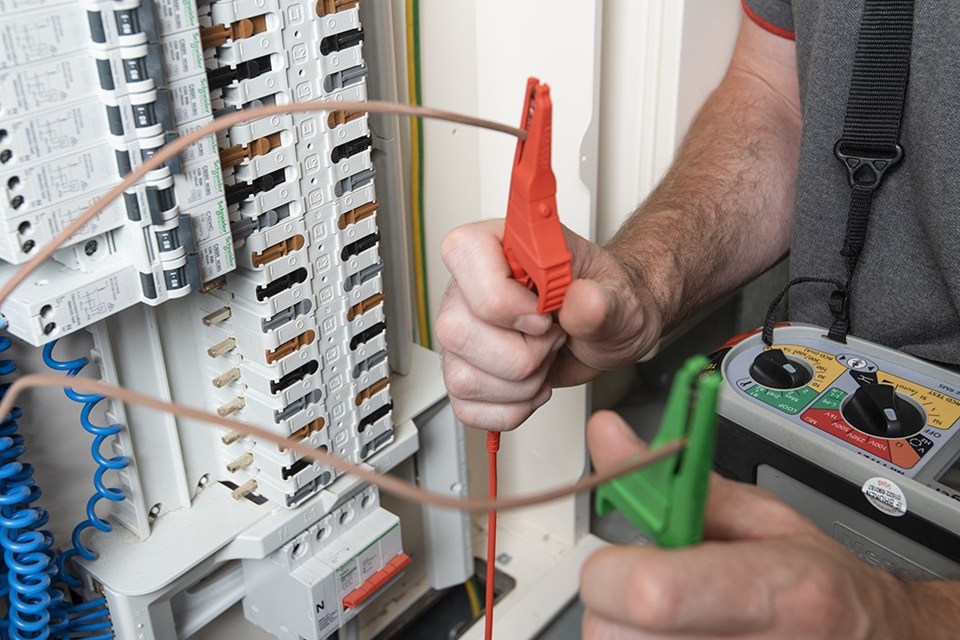Table of Contents
Electrifying Efficiency: The Evolution & Impact Of Electrical Panels
In the modern era, where energy efficiency and management have become paramount, the role of electrical panels in monitoring and managing power consumption has grown increasingly crucial. These panels, often overlooked, serve as the nerve center of a building’s electrical system, playing a key role in ensuring safe and efficient power distribution. This article delves into the evolution of electrical panels, their current technological advancements, and their impact on energy efficiency and sustainability.
Understanding Electrical Panels
At its core, an electrical panel functions as the main distribution point for electrical circuits in a building. It safeguards against overloads and short circuits, ensuring a stable and safe energy supply. Over the years, these panels have evolved from basic circuit breakers to sophisticated systems capable of managing complex energy demands. Modern panels, like those offered by Schneider Electric, incorporate intricate components such as programmable controllers and smart meters, enhancing their functionality far beyond mere power distribution.
Advances In Electrical Panel Technology
Recent advancements in electrical panel technology have been transformative. Smart technology integration, a key development, allows for real-time monitoring and control of electrical systems. This integration has led to significant improvements in efficiency, safety, and cost management. For instance, Schneider Electric’s smart panels enable users to monitor energy consumption closely, identify inefficiencies, and optimize power usage, leading to reduced operational costs and enhanced safety protocols.
Electrical Panels & Energy Efficiency
Electrical panels are instrumental in promoting energy efficiency. Modern panels help in identifying inefficiencies and reducing energy wastage. For example, case studies in various sectors, from industrial to residential, demonstrate significant energy savings and reduced carbon footprints by advanced electrical panels. These systems can pinpoint areas of excessive energy use, allowing for targeted improvements and contributing to overall energy conservation.
The Impact On Sustainability & Green Energy
These panels play a pivotal role in advancing sustainable energy practices. They are increasingly compatible with renewable energy sources and smart grids, facilitating a smoother transition to green energy. In industries and communities, the use of electrical panels compatible with renewable sources, like solar or wind energy, is a step towards sustainable energy practices, reducing reliance on non-renewable energy sources and decreasing environmental impact.
Challenges & Solutions In Implementing Advanced Electrical Panels
Despite their benefits, transitioning to advanced electrical panels can pose challenges, particularly in terms of costs and technical expertise. For businesses and households, the initial investment, and the need for skilled professionals for installation and maintenance are significant barriers. However, solutions like financial incentives, government subsidies, and support from companies like Schneider Electric can help overcome these hurdles. Moreover, professional guidance is crucial in ensuring efficient installation and maintenance of these systems.
Regulatory Compliance & Safety Standards
A critical aspect of modern electrical panels is their adherence to stringent regulatory compliance and safety standards. These standards, set by international and local regulatory bodies, ensure that electrical panels are not only efficient but also safe for use in various environments. For instance, panels designed for industrial use must meet higher safety standards due to the complex and high-power demands of industrial machinery. The integration of features like fault detection and circuit isolation in newer models by manufacturers like Schneider Electric reflects an ongoing commitment to safety and compliance. This adherence not only minimizes the risk of electrical accidents but also ensures that the panels meet the evolving regulatory requirements, which are increasingly focused on energy efficiency and environmental sustainability.
Integration With Renewable Energy Systems
Another dimension of modern electrical panels is their seamless integration with renewable energy systems. As the world shifts towards renewable sources like solar and wind, electrical panels are being designed to handle the variability and intermittency of these sources. Advanced panels can now manage the flow of energy from these renewable sources, ensuring a stable power supply even when the renewable sources are not generating power. This capability is crucial for the effective use of renewable energy in both residential and commercial settings, making electrical panels an essential component in the broader transition to a sustainable energy future.
Conclusion
In conclusion, the evolution of electrical panels from basic circuit protection devices to sophisticated energy management systems marks a significant leap in our quest for energy efficiency and sustainability. The integration of smart technology, adherence to safety and regulatory standards, and compatibility with renewable energy systems underline the multifaceted role of electrical panels in modern energy infrastructure. As technology continues to advance, the importance of these panels in managing our energy needs efficiently and sustainably will only grow. Embracing these advancements is not just a step towards more efficient energy use, but a stride towards a greener and more resilient future.



